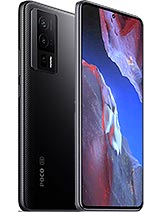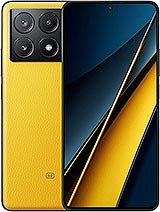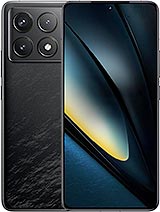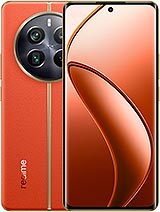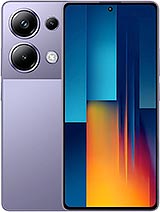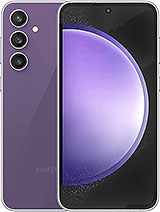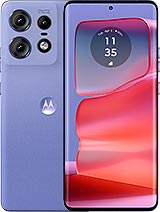Poco F6 Pro review

Display
The display is one of the clear highlights of the Poco F6 Pro. It has a 6.67-inch flat AMOLED panel with a WQHD+ resolution of 3200 x 1440 pixels. That works out to about 526 ppi, which is very sharp indeed.

You also get 12-bit color depth with the Poco F6 Pro plus 3840Hz PWM dimming. Poco claims that the phone will produce about 700 nits of typical brightness, 1,200 nits of whole display brightness, and a whopping peak brightness of 4,000 nits. We conducted our standardized testing and only got around 508 nits from the display by maxing out the slider. Our maximum brightness measurement reached 1,203 nits. That's definitely more than enough to be comfortable outdoors.
We measured only 2 nits of brightness at point white at the minimum brightness setting on the slider.
The Poco F6 Pro also offers a Wet Touch display features, allowing the display to remain more responsive and be usable when wet.
The Poco F6 Pro has a 120Hz refresh rate. According to the phone's reporting, it supports three refresh rate modes - 60Hz, 90Hz and 120Hz. In terms of actual settings, the phone offers three modes to choose from: Auto and two Custom modes - 60Hz and 120Hz.

As you can imagine, 60Hz mode locks the refresh rate at 60Hz. As for the Auto and 120Hz modes, both have very similar automatic switching behavior. They refresh at 120Hz when you are interacting with the phone or when there is motion on the screen. Once neither is true, the refresh rate quickly drops to 60Hz to conserve power. We never actually saw the Poco F6 Pro use its 90Hz mode. On a more positive note, the automatic switching logic seems to include the detection of video playback, which also lowers the refresh rate to 60Hz.
The only substantial difference between the Auto and 120Hz modes is that the latter offers nifty per-app settings on which apps should use a high refresh rate and which shouldn't. You can, hence, try to force some apps and games to use high refresh rates from there or alternatively force others to save power. Speaking of games, we tried our usual assortment of games and managed to get a high refresh rate working on all of them.
The Poco F6 Pro has Dolby Vision and HDR10+ certification. It has decoder support for every popular HDR format, including HDR10, HDR10+, HLG and Dolby Vision. Widevine DRM is also the highest possible L1.
Battery life
The Poco F6 Pro has a pretty large 5,000 mAh battery. We ran our standard set of tests and found that the phone does alright in terms of endurance, but not spectacular in any way. With an Active Use Score of 10:29 hours, battery life could definitely be better. Web browsing and gaming seem to be particularly taxing.
Our new Active Use Score is an estimate of how long the battery will last if you use the device with a mix of all four test activities. You can adjust the calculation based on your usage pattern using the sliders below. You can read about our current battery life testing procedure here. For a comprehensive list of all tested devices so far, head this way.
Charging speed
The Poco F6 Pro supports 120W Xiaomi HyperCharge. The phone comes bundled with a 120W charger and an appropriate 6A-rated cable.

Just like other 120W charging-capable Xiaomi phones, this one also has Boost Charge mode. This is the feature that allows the fastest possible charging at 120W, but there is a catch - it works only when the phone is with its screen turned off as an overheating prevention measure. The Boost option is turned off by default, but you can enable it from within the Battery settings.
We did our charging test with the Boost mode, as otherwise, the phone is limited to 60W-80W charging.
The Poco F6 Pro with its 120W GaN charger is an incredible combo. We got 31% of the charge in just 5 minutes, while 15 minutes replenished 64% of the battery. A full charge took 27 minutes, which is not exactly the advertised 19 minutes, but still incredibly fast.
During the 120W fast charging, the phone didn't get hot, just warm.
Poco promises that the F6 Pro can go through 1,000 charging cycles and still maintain 90% of its original battery capacity.
Speakers - loudness and quality
The Poco F6 Pro has a stereo speaker setup. It is of the hybrid variety, with one channel being handled by the amplified earpiece.
It is a pretty good speaker system that managed a -24.8 LUFS loudness score in our testing. That's louder than its Poco F5 Pro predecessor and about as loud as the vanilla Poco F5. We like how the F6 Pro sounds as well. It has well-defined and pretty clean mids, good and generally not too badly distorted highs and even some bass. The sound stage is pretty rich.

The F6 Pro has Dolby Atmos support as well as Poco's own take on spatial audio, called "immersive sound". There is also a nice and feature-rich equalizer with both presets and manual controls.
Use the Playback controls to listen to the phone sample recordings (best use headphones). We measure the average loudness of the speakers in LUFS. A lower absolute value means a louder sound. A look at the frequency response chart will tell you how far off the ideal "0db" flat line is the reproduction of the bass, treble, and mid frequencies. You can add more phones to compare how they differ. The scores and ratings are not comparable with our older loudspeaker test. Learn more about how we test here.
Connectivity
The Poco F6 Pro is a dual-Sim device. It has two Nano-Sim slots supporting SA and NSA Sub-6 5G connectivity, and it can do so simultaneously. For location, the phone has GPS (L1+L5), GLONASS (G1), BDS (B1I+B1c+B2a), GALILEO (E1+E5a), QZSS (L1+L5) and NavIC (L5). It is great to see support for the L5 GPS band. Triple-band Wi-Fi 6e handles local connectivity. Yes, you do get 6GHz support with this device. Plus, the antenna placement has been optimized to ensure the best possible coverage. Bluetooth is version 5.3 with LE support. NFC is on board but market-dependent, so check with your retailer. There is no 3.5mm audio jack or an FM radio receiver.

The Type-C port on the Poco F6 Pro is backed up by a basic USB 2.0 data connection, which means a theoretical maximum transfer speed of 480 Mbps. There is USB Host/OTG support, but nothing else fancy like video output.
The Poco F6 Pro has a pretty good set of onboard sensors. There is an STMicto lsm6dsv accelerometer and gyroscope combo, a Xiaomi TCS3720ALSPRX ambient light sensor, a Xiaomi hardware proximity sensor and a QST qmc630x magnetometer and compass combo. There is no barometer on board.
Reader comments
- Anonymous
- 27 Apr 2025
- LaJ
Had it for 1 year , until my small niece spilled unintentionally a full glass of water on table next to it..wich killed phone .. so was a good phone good chip that fast charging was reliable and amazing good connectivity.. Cons battery life cou...
- 444hz
- 25 Mar 2025
- UUK
Xioami 14t pro both gaming and camera
- Koko
- 02 Feb 2025
- YUU
It's a hard comparison actually, I'm personally love a55 camera but to be compare with the option you give, hardly to put on the dot. Three of them have pretty good camera quality, you need to see it with your own eyes, Vivo v series also h...



